Parks, Nature Views, Walking, Ibiza
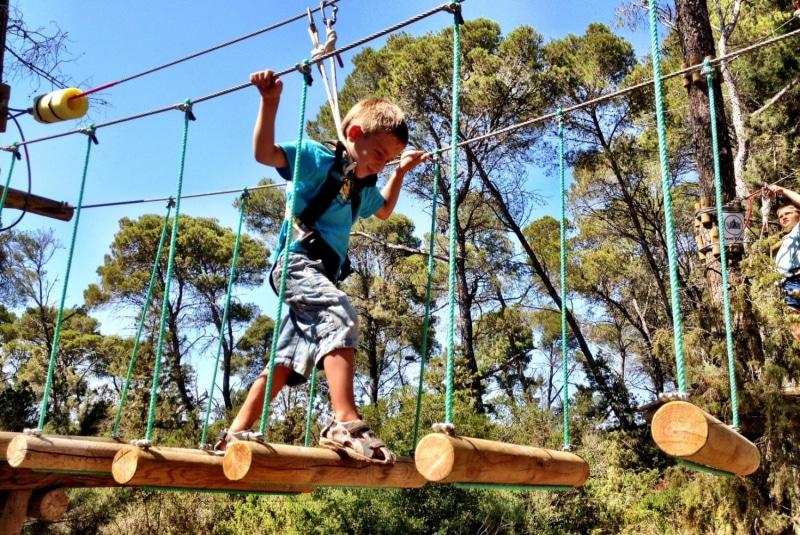
Removed from Unnamed collection
Acrobosc Ibiza Adventure Park 
Acrobosc Ibiza is a fantastic outdoor adventure park with activities both for young and old. Set in an area of pine trees just 100m from the Cala Pada beach, there are three circuits you can follow, according to your height and age, putting your balance and skills to challenge. Thirty-nine platforms between 2 and 6m high, 49 obstacles and 20 zip lines from 4 to 65m length and trampolines will guarantee you 2 to 2 1/2 hours of fun & adrenaline.
After fitting you with a safety harness, the instructors will train you and then it's up to you to find your pace as you balance tight ropes, walk over nets suspended mid-air or slide down one of the zip slides (always safely connected to a safety cable). Those under age 18 need to be accompanied by an adult. https://www.ibiza-spotlight.com/activity/acrobosc-ibiza
Map
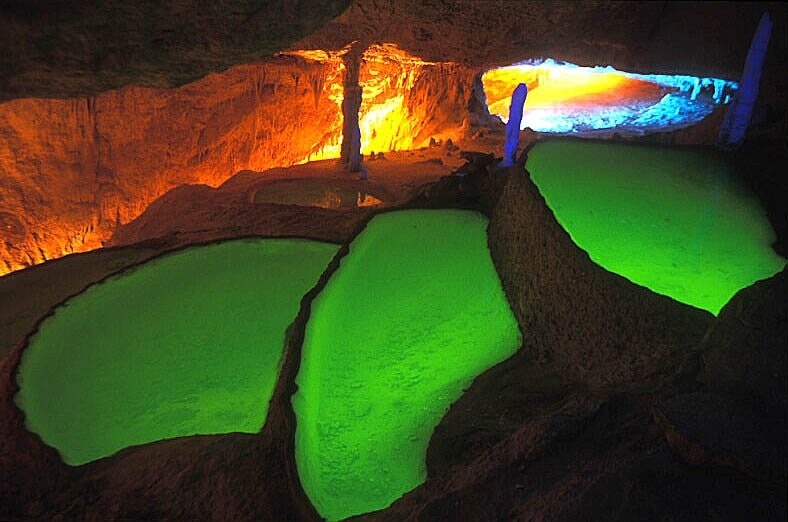
Removed from Unnamed collection
Can Marca Caves 
Take some time away from the heat of the day in the eerie, underground caverns of the Cueva Can Marça in Puerto de San Miguel. Spookily silent and illuminated in strange colours, the formations of stalagmites and stalactites make for a Jurassic backdrop to the tour of the cavernous galleries.
Originally used by smugglers to store contraband, the marks they used to guide them in the dead of night can still be seen on the walls. At the heart is a spectacular music and light show with a 10 metre cascade of water. Visitors also get to see the magnificent views out to sea from openings hewn into the cliff side. https://www.ibiza-spotlight.com/activity/can-marca-caves
Map
Explore more places related to this search:
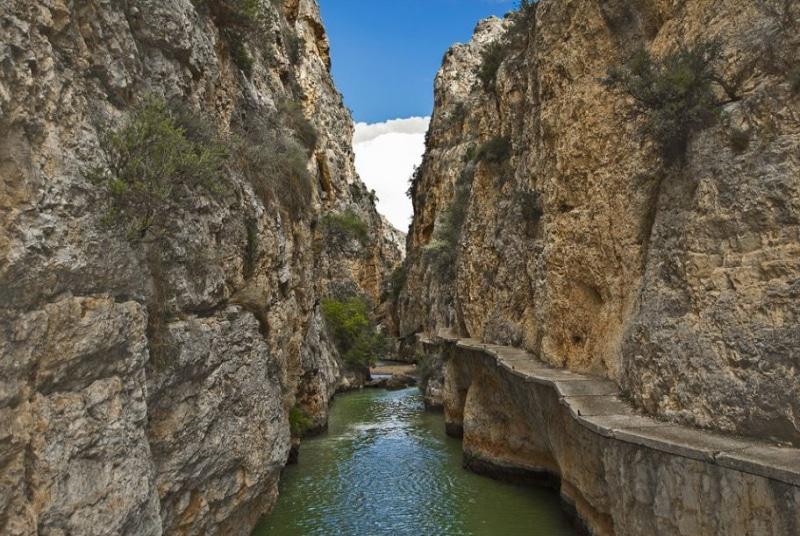
Removed from Unnamed collection
Almadenes Canyon 
Anyone who loves nature and places untouched by the human hand will find the Almadenes Canyon a landscape of singular beauty. On the other hand, there is a rich biodiversity of flora including poplars, ashes and willows and wildlife such as the eagle owl, the short-toed Eagle and the otter. In this attractive touristic enclave, you can pursue adventure sports such as trekking, canyoning, and of course, the river descent by inflatable boat or kayak which offers every visitor the opportunity to travel down the river irrespective of their age or physical fitness. https://www.murciaturistica.es/en/natural_area/ca%c3%b1on-de-almadenes-4508/
Map

Removed from Unnamed collection
Cueva Del Puerto 
The underground cavity has the longest horizontal run of the Region of Murcia and its more than 700 meters long. It has different astonishing rooms and spectacular rock formations with
three fantastic audiovisual shows.
Locution and synchronized lighting with LED technology and exciting walkways all provided. Also specialized guides for excursions.
The Cueva del Puerto Reception Centre of Calasparra has a cafeteria, a multipurpose hall also used for conferences, interpretative room, terraces for activities, parking lots, cave tourism centre, etc. https://www.murciaturistica.es/en/monument/cueva-del-puerto-5270/
Map

Removed from Unnamed collection
Park Guell 
Park Guell is one of the most fantastic designs ever built by Gaudi. A landmark on its own, it features amazing views of Barcelona and plenty of modernist works. Needless to say, as soon you pass the entrance, you’ll notice right away that this isn’t an ordinary park.
Curiously, Park Güell wasn’t originally intended to be a park, but rather a project for luxurious homes. In 1900, the site was just a rocky hill with nothing but vegetation around, in the vicinity of some isolated upper class country houses. The result was one of the most fascinating works by Gaudí.
The intention of the project was to take advantage of the breathtaking views of Barcelona and the clean fresh air, away from the factories, in order to build a top of the line housing complex.
In Park Guell, there are plenty of paths and vegetation to enjoy, but the architectural structures are the glue that holds the whole place together. https://barcelonando.com/parc-guell
Map

Removed from Unnamed collection
Parc Central de Nou Barris 
The park covers a surface area of 17 hectares and gives Nou Barris a pleasant, modern appearance in keeping with the residential area where it is located. It blends in perfectly with the site and its undulating landform has a lot of surprises in store. http://www.barcelonaturisme.com/wv3/en/page/524/parc-central-de-nou-barris.html
Map
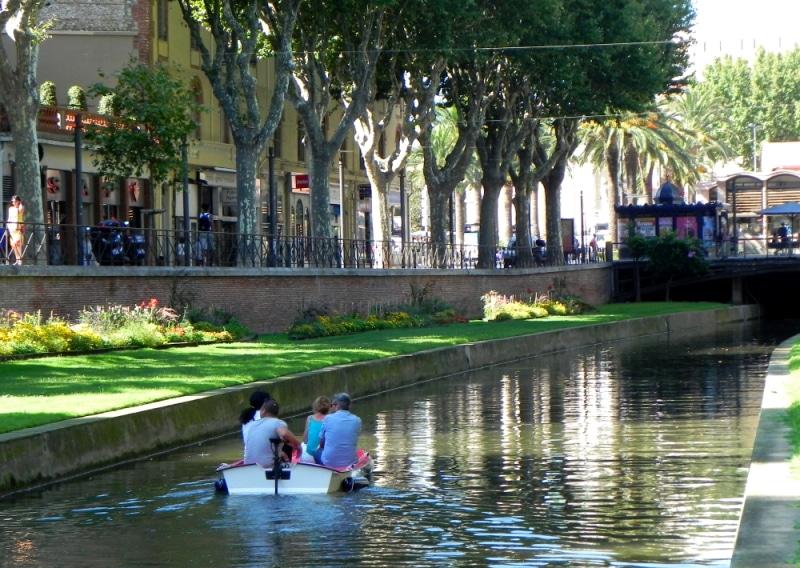
Removed from Unnamed collection
Catalan Barks 
Stroll along the water in an electric boat, drive yourself on the Bass, in the heart of Perpignan! Up to 4 people per boat. http://www.perpignantourisme.com/decouvrir/nos-visites-guidees/individuels/barques-catalanes#sthash.N1c4WA1t.dpbs
Map
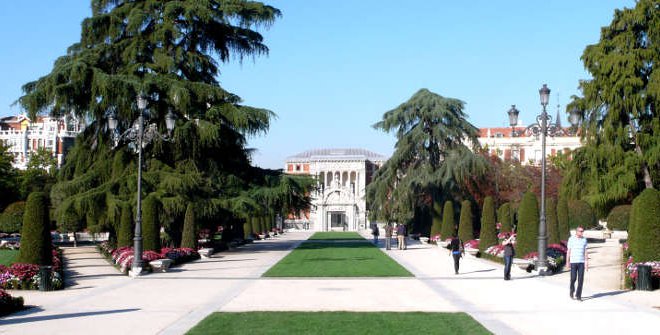
Removed from Unnamed collection
El Retiro Park 
Covering over 125 hectares and comprising more than 15,000 trees, El Retiro Park is a green oasis in the heart of the city. In it you’ll find all kinds of interesting monuments and gardens, including the Jardín de Vivaces, the Jardines de Cecilio Rodríguez (Andalusian-inspired classicistic gardens), the Jardines del Arquitecto Herrero Palacios, the Rosaleda rose garden and the Parterre Francés, which holds a Mexican conifer that is nearly 400 years old and is believed to be Madrid’s oldest tree. https://www.esmadrid.com/en/tourist-information/parque-del-retiro
Map
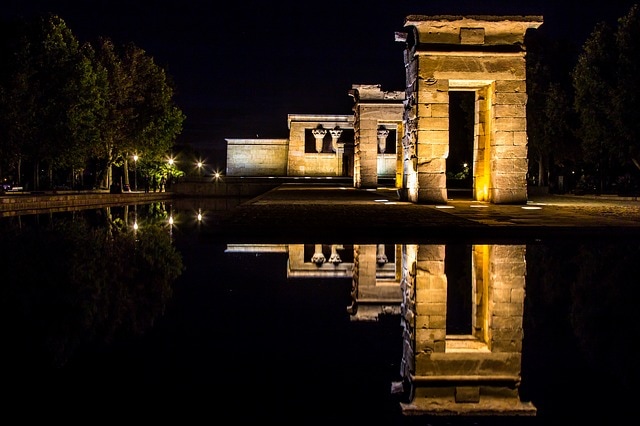
Removed from Unnamed collection
Temple of Debod Gardens 
In 1968, Manuel Herrero Palacios designed these 8 hectares of gardens so that one could sit and admire the magnificence of the Temple of Debod, which had been donated to Spain by the Government of Egypt. The Debod Mausoleum, which is more than 2,000 years old, was rescued from the waters of Aswan Dam by a group of Spanish archaeologists. They brought back every stone and rebuilt it in its present location, after the Government of Egypt donated it to Spain. It was set on the remains of Cuartel de la Montaña, retaining the orientation to the sun it had at its place of origin.
From here, the famous Manzanares cornice, with the Royal Palace, Casa de Campo and, possibly, the most beautiful sunsets in Madrid, can be seen. The garden’s parterres on both sides are merely a vegetation frame. They are enclosed with squares, banana trees for alignment and groups of palm trees and Mediterranean plants on the meadows. https://www.esmadrid.com/en/tourist-information/jardines-del-templo-de-debod
Map

Removed from Unnamed collection
The Midi Canal 
The work of Pierre-Paul Riquet carried out in the 17th century to link the Atlantic to the Mediterranean, the Midi Canal has been listed as a UNESCO world heritage since 1996. http://www.tourism-carcassonne.co.uk/detail/007a1d2be4f167c8e8cdfe8407287873/462861
Map
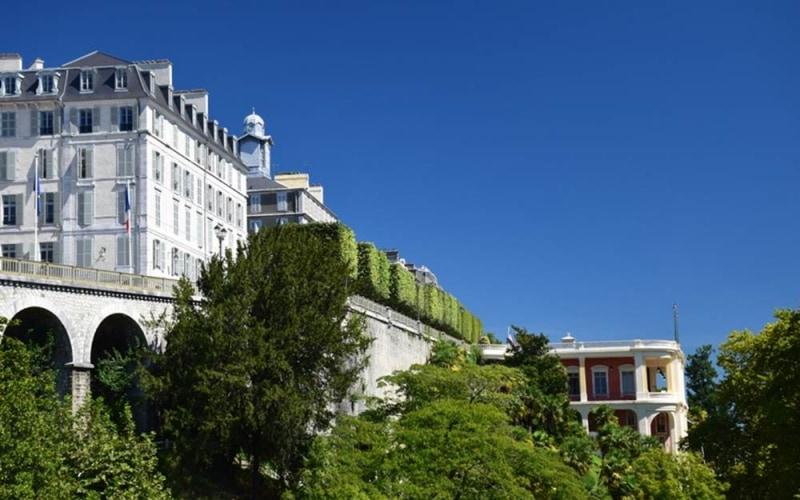
Removed from Unnamed collection
The Joantho Gardens, 
Facing the station, the Joantho Gardens, named after the Municipal Councilor, who proposed the plan to Henri Faisans, mayor of Pau from 1888 to 1908. The look is up: the magnificent perspective that is on the arches of the Boulevard des Pyrenees. http://www.pau-pyrenees.com/pau/les-jardins-joantho/tabid/315/offreid/b9920c97-06b6-4279-a8cd-fc18a5bf8f95
Map

Removed from Unnamed collection
Pierre Baudis Japanese Garden 
If you would like enjoy a journey to the Orient, treat yourself to a Zen promenade in the Japanese Garden, which is labelled a Remarkable Garden.
Situated in the heart of Compans-Caffarelli Park, this garden’s exotic feel is a surprise. A veritable invitation to meditate and relax, it is a synthesis of the gardens you can find in Kyoto, Japan, constructed between the XIV and XVI Centuries.
It is made up of all the characteristic elements: a showcase of the worlds of minerals and plants and the aquatic world complete with traditional decorative features.
You can discover a rock garden with islands devoted to the crane and the turtle, nine rocks, a lake, a tea pavilion and a landscaped garden featuring a dry waterfall, Japanese stepping stones, a lantern, a red bridge, an Island of Paradise, a Mount Fuji and the headstones of three saints. http://www.toulouse-visit.com/offre/fiche/patrimoine-culturel/jardin-japonais/PCUMID031FS0007F
Map
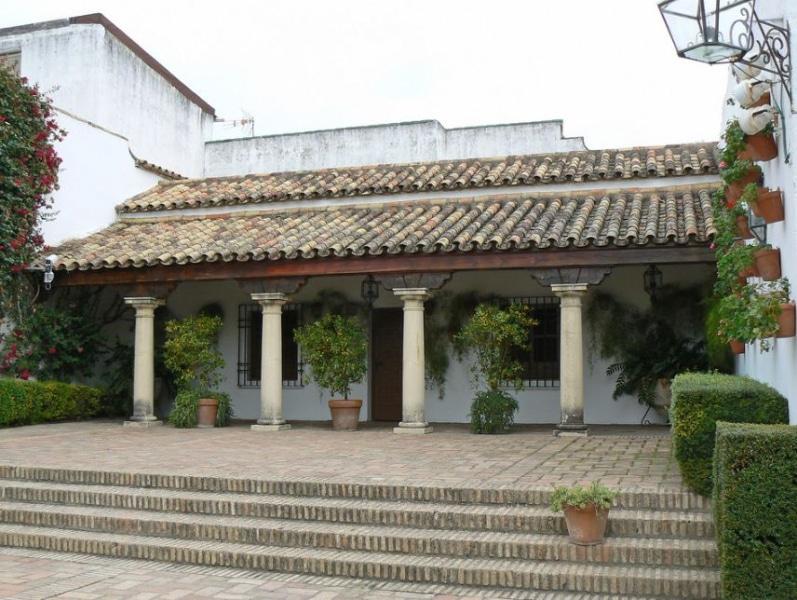
Removed from Unnamed collection
Viana Palace 
This palace museum has an extensive collection of items from Cordoba including furniture and coffered objects.
Of particular note is the staircase which gives access to the upper floor. This stately mansion was originally a single building that was extended with the adjoining buildings, and today occupies a large area with a predominance of courtyards and gardens. https://www.spain.info/en/que-quieres/arte/monumentos/cordoba/palacio_de_los_marqueses_de_viana.html
Map
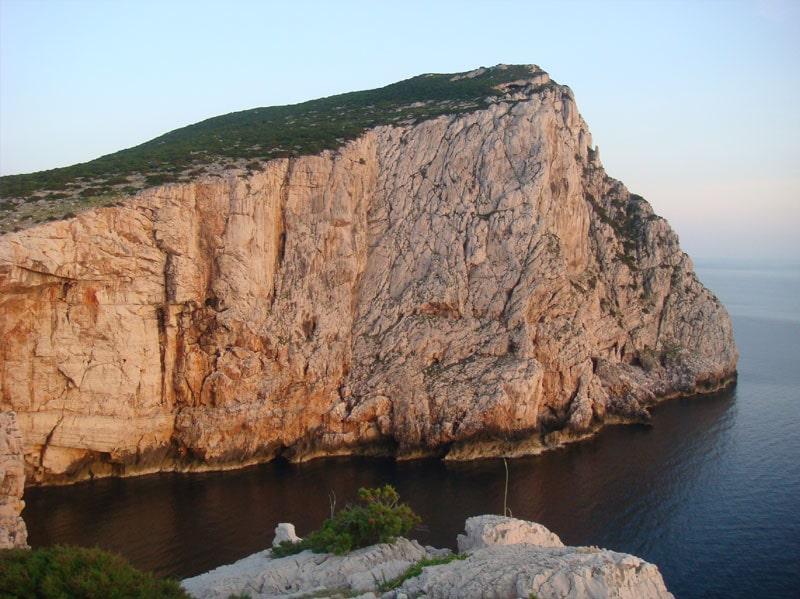
Removed from Unnamed collection
Capo Caccia & the Marine Park 
The promontory of Capo Caccia, also known as the Sleeping Giant, is the undisputed symbol of Alghero, standing just north of the town’s bay. These sheer cliffs, known paradise for climbing lovers, drop to very deep water providing fantastic views of the coast. Not to be missed is the breathtaking panorama from the cliff in front of the island of Foradada. http://www.algheroconcierge.com/places-of-interest/0/4/18/capo_caccia__the_marine_park.aspx
Map
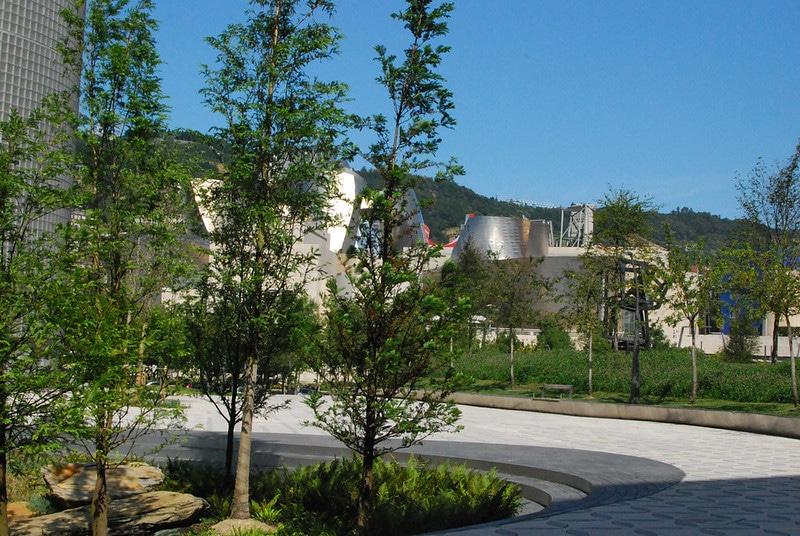
Removed from Unnamed collection
Campa de Los Ingleses Park 
The park of the Campa de los Ingleses occupies the green space between Guggenheim Museum Bilbao and Deusto Bridge as well as the new buildings like the Library of the University of Deusto, the Auditorium of the UPV-EHU and the Iberdrola Tower, among others. This area, which in its time has been a British cemetery, the Athletic football ground and also a runway, is 25,000 m2 and was landscaped by Diana Balmori, who also designed the Plaza de Euskadi. The trees planted there (oak, holm oak and jacaranda) are also the most representative in Doña Casilda Park . http://www.bilbaoturismo.net/BilbaoTurismo/en/parques/campa-de-los-ingleses-park
Map

Removed from Unnamed collection
Ribera Park 
Ribera Park, opened in 2003, is located in the space between the river, Euskalduna Palace Conference Centre, Guggenheim Museum Bilbao and Abandoibarra Avenue. It has an area of nearly 84,000 m2 and an interesting linear configuration. Its various areas are separated by streetlights twelve metres high, which illuminate the park at night, and it is lined with palms and lime trees. It features a sculpture park called "Memory Lane", evoking the industrial and maritime past of the area where it is located. http://www.bilbaoturismo.net/BilbaoTurismo/en/parques/ribera-park
Map
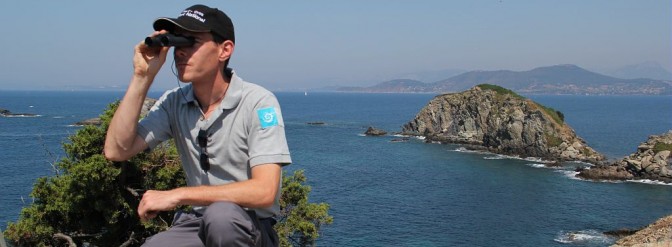
Removed from Unnamed collection
Port-Cros National Park 
First maritime park in Europe, Port-Cros National Park covers 690 acres on land and almost the double on sea. Its missions are multifold, from devising protective measures to leading campaigns to raise awareness about the park’s natural habitat. http://www.hyeres-tourism.co.uk/land-nature-culture/nature/port-cros-national-park
Map

Removed from Unnamed collection
Chateau d'Alpheran 
Built in around 1720, Château d'Alphéran was for many years the country home of the Alphéran de Bussan family.
It stands in grounds of 30 hectares with a swimming pool, and a cedar 300 years old in the centre. This 18th-century chateau, 10 minutes from Aix-en-Provence, has been restored in traditional style.
The estate also enjoys a commanding view of Sainte Victoire mountain. http://www.aixenprovencetourism.com/en/fiche/2689/
Map

Removed from Unnamed collection
The Garden at the Place des Carmes 
Access to the gardens at the Place des Carmes. This public square and garden closes at different times depending on the season. https://www.provenceguide.co.uk/cultural-heritage/avignon/the-garden-at-place-des-carmes/provence-4761234-1.html
Map
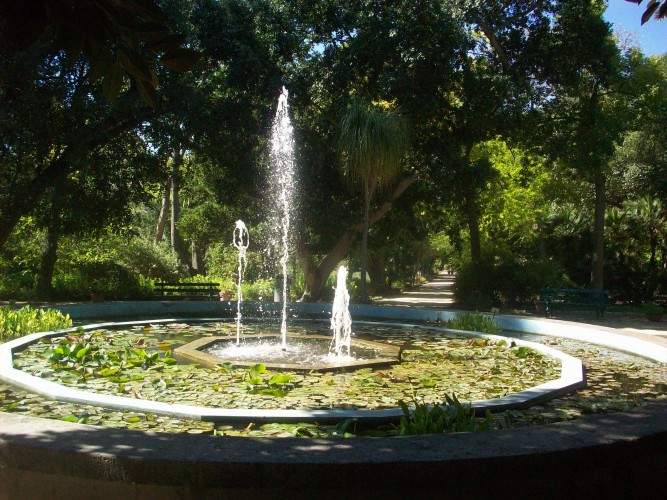
Removed from Unnamed collection
Botanic Gardens 
The botanical garden, directed by the University of Cagliari and streched for 5 hectares. Currently the garden contains some 2000 species, predominantly of Mediterranean origin but with a good collection of succulents and tropical plants as well. http://www.cagliariturismo.it/en/places/places-of-nature-318/green-areas-16/botanical-garden-83
Map

Removed from Unnamed collection
A Campo Abierto 
Enjoy the visit to the brave cattle ranch of TORRESTRELLA in the Los Alburejos Estate of Alvaro Domecq. In the best theater imaginable, in the freedom of the Andalusian countryside, you will know a day in the life of these magnificent animals.
The visit starts with a nice 700 meters walk discovering the fauna and flora of the andalusian countryside while you will see the bulls in freedom and the oxen. At the bull route, In the best environment you can imagine,open land, and seating in a comfortable grandstand you will discover the life of these wonderful animals: the brave bulls, the cows with the stallion bull and their calves, the mares and foals, the oxen, the riders and horses performing andalusian and classical dressage. https://www.acampoabierto.com/en/a-campo-abierto-en
Map

Removed from Unnamed collection
Le Parc Exflora 
The Park Exflora is the most recent Antibes garden. The 12 acres of land are composed of an olive grove and different types of Mediterranean plants. Fountains, jets and ponds form a “water path” 500 metres long. Along the alley leading to the sea, many rose bushes are planted, as a reminder of the famous rose productions of Antibes. http://www.antibesjuanlespins.com/en/pages/parks-and-gardens
Map
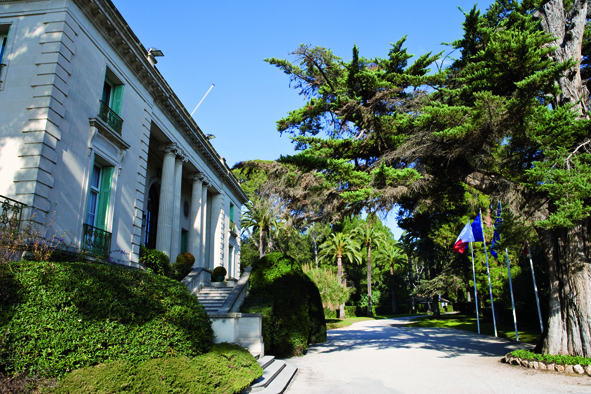
Removed from Unnamed collection
The Villa Eilenroc 
At the tip of Cap d'Antibes, on a superb plot of 11 hectares, you will find the villa Eilenroc. This exceptional residence symbolizes the luxury and voluptuousness of the Belle Epoque. It was built in 1867 following plans by Charles Garnier, the architect of the Paris and Monte Carlo opera houses. http://www.antibesjuanlespins.com/en/art-et-culture/villa-eilenroc-and-its-gardens-0
Map
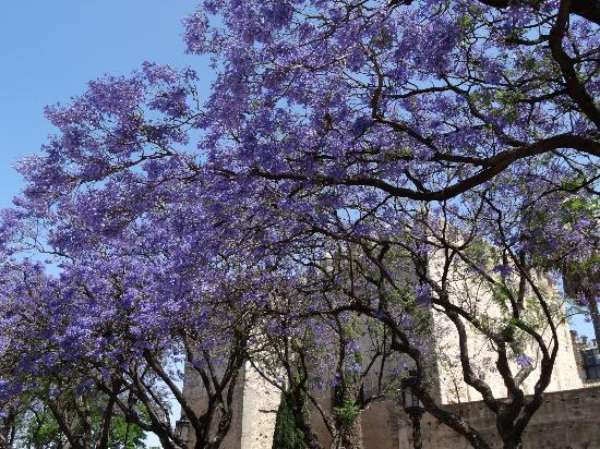
Removed from Unnamed collection
Alameda Vieja 
Alameda Vieja is a well known Park in the city of Jerez. http://www.turismojerez.com/index.php/en/what-to-visit-in-jerez/nature4/city-parks/item/1603-alameda-vieja?catid=127
Map

Removed from Unnamed collection
Zoobotanico Jerez 
The Zoological Park and Botanical Garden of Jerez is one of the oldest in Spain. Its history begins at the beginning of the 50s when in the old Tempul Gardens a small collection of animals without recipients were deposited in the Port of Cádiz. The main promoter of the idea was the then Councilor for Parks and Gardens Mr. Alberto Durán Tejera.
Zoological collection of Zoobotanico Jerez contains more than 1,000 animals belonging to about 200 different species from the five continents. Enjoy your day among flamingos, wildcats, giraffes, meerkats and many more! http://www.zoobotanicojerez.com/
Map
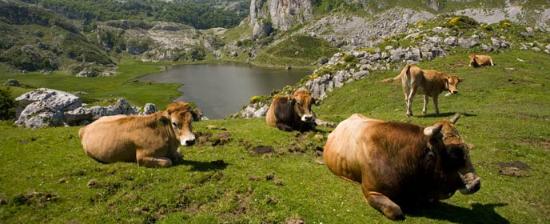
Removed from Unnamed collection
Picos de Europa National Park 
The Picos de Europa National Park was the first one to be awarded that designation in Spain. Its history goes back to 1918, when don Pedro Pidal, Marquis of Villaviciosa, promoted the law to create the Montaña de Covadonga National Park, which was named Picos de Europa National Park on 30 May 1995. This natural area was awarded the UNESCO Biosphere Reserve designation in 2002. http://www.spain.info/en_IN/que-quieres/naturaleza/espacios-naturales/parque_nacional_de_los_picos_de_europa.html
Map
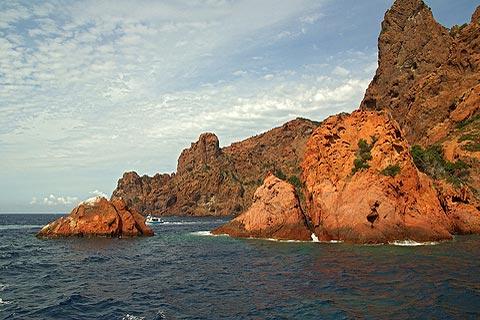
Removed from Unnamed collection
Scandola Nature Reserve 
The Scandola Natural Reserve (created 1975) is a World Heritage Site to the south-west of Calvi, on the Cape Girolata peninsula (hal way down the west coast of Corsica). http://www.corsicatravelguide.com/scenerycorsica/scandola.php
Map
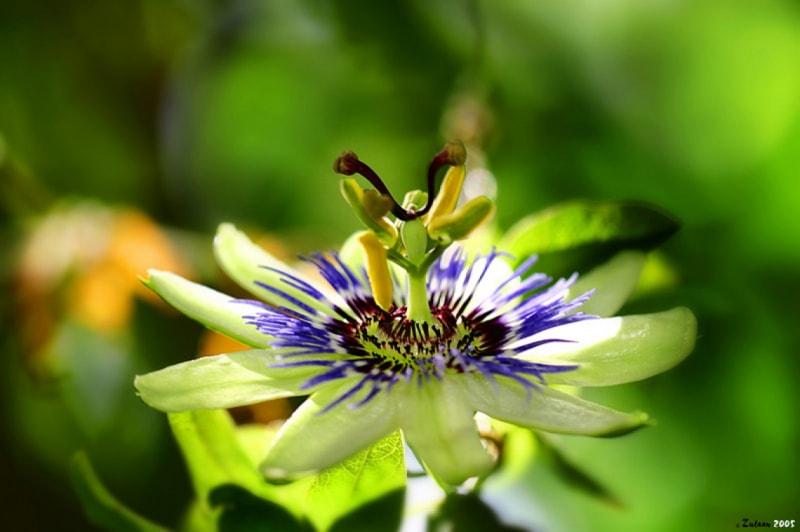
Removed from Unnamed collection
Parc Phoenix 
It offers many activities and exhibitions on Nature all year long, with - some twenty theme gardens display 2,500 plant species. A lake, where a hundred birds - ducks, pelicans, black swans - live together in peace and in which are reflected the white marble façades of the Asian Arts Museum designed by the Japanese architect Kenzo Tange. Also one of the largest greenhouses in Europe: the ‘Green Diamond’, that takes visitors through 6 different tropical climates to discover several thousand rare plant species, including tree ferns, an orchid collection... and many more plants. And you can see crocodiles, iguanas and exotic birds. A family of Varis lemurs are currently delighting visitors. http://en.nicetourisme.com/nice/1256-parc-phoenix%20-
Map

Removed from Unnamed collection
Allianz Riviera 
With the appearance of the Allianz Riviera, the City of Nice has acquired a multifunctional facility to help enhance its international reputation as France’s leading business tourism destination after Paris. http://en.nicetourisme.com/nice/40724-allianz-riviera
Map
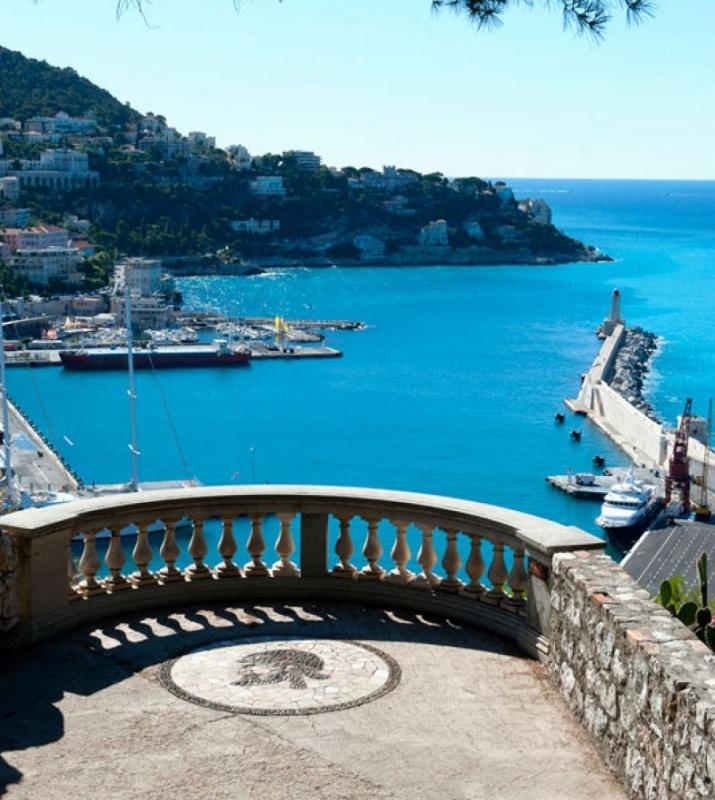
Removed from Unnamed collection
Parc De La Colline Du Chateau 
The city’s original site, the Castle Hill (Parc De La Colline Du Chateau) once boasted a reputedly impregnable citadel that was entirely dismantled by the soldiers of the French King Louis XIV in 1706.
Truly a maze of greenery that has become popular for its cool undergrowth and surprising waterfall, this wonderful place for strolling offers a wonderful viewpoint over Baie des Anges, Old Nice and the Port (orientation table). Spectacular lighting at night. http://en.nicetourisme.com/nice/92-parc-de-la-colline-du-chateau
Map

Removed from Unnamed collection
Arcipelago di La Maddalena National Park 
The National Park covers - including land and marine areas - 20,180 ha, with a coastal development of 180 kilometers. La Maddalena, mother island and capital of the homonymous Archipelago, is the Park gateway. It is the one and only inhabited island, except for the village of Stagnali in Caprera Island and the settlements of Santa Maria. http://www.parks.it/parco.nazionale.arcip.maddalena/Epun.php
Map

Removed from Unnamed collection
Fontvieille Park 
Fontvieille Park encircles the Big Top, providing the district with an urban landscaped park that is much appreciated by families. It features Mediterranean plants such as olive, pine and cypress trees alongside more exotic species like Strelitzias, Stenocarpus and Araucarias. https://www.visitmonaco.com/us/place/the-gardens/181/fontvieille-park
Map
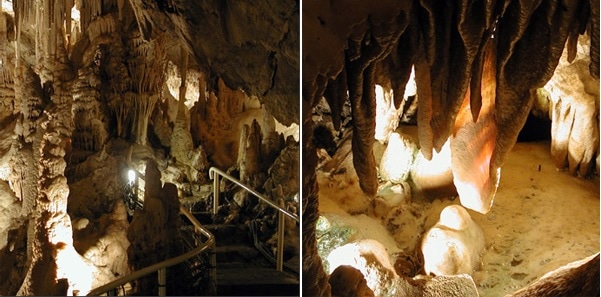
Removed from Unnamed collection
Exotic Gardens & Observation Cave 
Spread over an area of approximately 15,000 m2, the Exotic Garden is home to a thousand cacti and other succulent plants with stems or hypertrophic leaves which store water. Originally from the planet’s main semi-arid regions, these plants still produce plenty of flowers. The principal flowering seasons are winter (January–February) for South African succulents such as Aloe and Crassula, and spring and summer for cacti, a family native to the American continent.
The enormous trees which line the paths of the Exotic Garden illustrate the age of the collection which served as the basis for the creation of the garden at the instigation of Prince Albert I. Opened to the public in February 1933, and supplemented in the 1960s by a botanical centre and specialist tree nursery, the garden is one of the Principalities most visited tourist attractions.
At the base of the cliff on which the Exotic Garden is situated (called “the observatory” due to the long-standing presence of a small astronomical observatory), at an altitude of 100 metres, there is a subterranean chamber equipped to receive visitors. The limestone rock, carved out by water containing carbon dioxide, is studded with caverns adorned with geological formations bearing evocative names: stalactites, stalagmites, draperies, columns, soda straws...
Expert guided tours of the cave are included in the entry ticket for the Exotic Garden. The tour travels from a depth of 98 metres to a depth of 40 metres (around 300 steps). The chamber plunges down almost to sea level and is regularly explored by local cavers.
The presence of prehistoric humans in the region of the cave is confirmed by the bones of the animals that they ate. These remains also illustrate the climate variations that have taken place over the last 250,000 years. http://www.visitmonaco.com/en/Places-to-visit/Gardens/The-Exotic-Gardens-and-the-Observation-Cave
Map
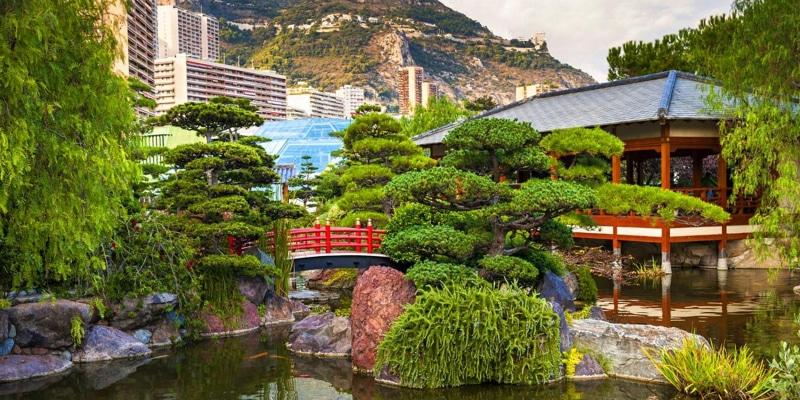
Removed from Unnamed collection
The Japanese Garden 
Those who take a stroll through the gardens will be able to discover all the essential components of a Japanese garden: a pond, islands, a waterfall, lanterns, bridges, a tea house and a Zen garden. This green oasis is a rich mix of Japanese tradition and Mediterranean touches, the result of close collaboration between gardeners from Monaco and Japan. The bamboo hedges, tiles (Awaji Island), stone lanterns, and the woods used in the various structures (gate, tea house, etc.) were all imported from Japan, while the plants, all Mediterranean (pine, olive and pomegranate trees), were pruned and looked after by Mr Beppu for three years to give them a Japanese appearance. https://www.visitmonaco.com/us/place/the-gardens/95/the-japanese-garden
Map

Removed from Unnamed collection
Place de Jaude 
Place de Jaude in its 21st century incarnation offers passing strollers a subtle blend made of rising jet fountains, magnolias, tulip trees and selected minerals. http://www.clermontferrandtourism.com/discovery/main-sites/place-jaude/
Map




